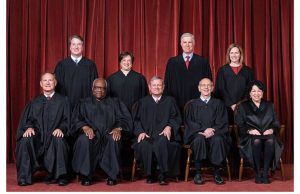Teams are an integral part of our lives. We commonly join sports teams, business teams, community teams and, increasingly, teams participating in charity events. The method of joining a team varies. People typically “try-out” for membership on a sports team, whereas corporate teams are usually formed for a specific business purpose such as developing a new product or improving some aspect of the organization. In the case of these in-house company teams, members are usually assigned to the team by their manager.
Charity event teams, however, are typically composed of volunteers — people who opt to participate for a variety of reasons. The purpose of this article is to explore the reasons people decide to join a charity team with the ultimate goal of helping team organizers recruit more people to join teams.
People who study team development have concluded that, given free will, people choose to join a team for reasons such as:
- Interpersonal Attraction. They like people in the group and think they would enjoy spending time with them.
- Group Activities. They like the things the group is doing and want to do those things, too.
- Group Goals. They share a common interest in and alignment with the team’s purpose.
- Affiliation. Joining the team meets the person’s basic need for connections and relationships.
- Tangible and Intangible Benefits. While it will vary based on the person and the group, one typical benefit is the enhanced status that the person gains from being a member of this team. In the case of a charity run, the person may also benefit because of a commitment to become more fit in preparation for the event.
The Research
A study was conducted with two basic goals: (a) to determine why people join a charity run team and (b) to find out if participation on the team met their expectations. The study included a brief online survey sent to members of three corporate teams. The teams had participated in Run for Dad, an event sponsored by the American Cancer Society to raise awareness about the dangers of prostate cancer. Run for Dad is held annually on Father’s Day in New Jersey and includes a 5K run, a 2-mile walk and short races for kids.
The 2013 Run for Dad included 62 teams. Some of the teams represented a business organization, some were composed of family and close friends, and others were created to honor a prostate cancer survivor or victim, while still others were formed by community, civic or fraternal organizations. The survey sample drew from the business teams who met certain criteria:
- The team had a minimum of 10 members.
- The event registration fee was paid by the team member rather than the company.
Three corporate teams who met these criteria were selected for participation in the study. The combined team membership for the three teams was 58 people.
A 10-item online survey was created to collect the data. The survey used a typical 5-point Likert scale to measure agreement with a series of 10 statements. The five points on the scale were:
5 Strongly Agree
4 Somewhat Agree
3 Neutral
2 Somewhat Disagree
1 Completely Disagree
The statements represented five hypothesized reasons that people join charity run teams and five conjectured outcomes for an individual who participated in such an event. The goal was to determine which of the statements registered most strongly with the participants. The survey was sent via email to all 58 members of the teams from the web site, Survey Monkey. Respondents did not, in any way, identify themselves or their company.
A total of 10 surveys were returned — a response rate of almost 18 percent which is higher than the average for online surveys. Looking at how responses to the questions were clustered, we believe that we have sufficient data to draw conclusions that can become the basis for action on team development.
The Findings
We asked why people signed up for a corporate team. Far and away the top reasons were:
- I believe in the importance of the cause (100%)*
- I thought it would be fun (100%)*
All 10 people agreed with the two statements (90 percent “strongly agreed.”). The other three reasons people said they joined their corporate team were:
- I responded to a direct appeal by our team captain (70%)*
- I thought it would be a good way to meet other people in the company (50%)*
- I wanted to get in better physical condition (30%)*
We also wanted to know if the experience of team participation met peoples’ expectations and if they are likely to change their behavior as a result of the experience. Survey data indicate that all respondents found their team participation to be a “fun experience.” Responses in this data set included:
- Being part of the corporate team was a fun experience (100%)*
- Having a corporate team at Run for Dad improved our reputation as a good corporate citizen in the community (100%)*
- As a result of participating in RUN FOR DAD I am more likely to spread the word about the dangers of prostate cancer and the importance of screening and early detection (80%)*
- As a result of participating on our corporate team I have gotten to know some of my fellow employees better (70%)*
- As a result of participating on our corporate team I feel more positive about the overall work environment at our company (60%)*
Conclusions
Through this survey we learned some things about what motivates people to join a charity run team. We learned that there is a very strong “fun factor” in their decision-making process. If people believe that the experience will be enjoyable and even, amusing, they are more likely to sign-up. In addition, and of equal importance, people will join a team if they believe in and support the purpose of the charity. In other words, there has to be some alignment between their beliefs and the mission of the event.
There has been a long-held belief among charities that an important differentiating factor was the person doing the “ask.” In this scenario, if the team captain or other person doing the member recruitment is well regarded and enthusiastic with a pleasant personality, people are more likely to join the team. Our data also supports this conclusion as some 70 percent of the respondents said they signed-up because of “a direct appeal by our team captain.” In addition, about half of the people said they saw joining a charity event team as a good way to meet other people in the company. On the other hand, using participation in the run as a pathway to improving physical fitness was not a strong motivating factor.
We also learned that team participation met their expectation as a highly enjoyable experience. In addition, participants believed that having a charity run team enhanced the company’s positive image in the community. It would not be a stretch to conclude that they like working for an employer who enjoys a positive reputation.
Of course, the mission of Run for Dad, and most charity runs, is to increase awareness about the disease. In this case, the data indicate that the participants are more likely to tell others about (in this case) “the dangers of prostate cancer and the importance of screening and early detection.” In addition, although only about half of the people said they joined the team to meet other employees, some 70 percent reported they became better acquainted with other employees. Finally, the data suggest that the good feeling of the charity run experience may translate to a more positive work environment back on the job.
Implications for Action
So, what does it all mean? How can a corporate manager or team leader use this information to their benefit? What the key messages that emerge from this study?
- Make it a Fun Experience. You know what works best in your organization. What do employees think is fun (or not fun)? You can create a colorful, lively flyer with photos of employees that encourages people to sign-up and provides “how-to” information. Ensure people understand that not everyone must run or walk in order to participate — every team needs people to cheer, distribute water and do fund-raising. Consider a pre-event team meeting on-site that is fun and, of course, has some food. Mention in the invitation that team participation is also a fun way to meet your fellow employees. Take lots of photos during the run that you can send to the participants, post on Facebook and include in a corporate publication.
- Emphasize the Cause. Provide brief information about the cause and the importance of the run or walk. Emphasize what each person can do to be an “ambassador” for the cause. Encourage team members to begin by “spreading the word” among their family and friends. Mention that support for this charity is part of the organization’s overall goal of being an active player in the effort to improve the quality of life in the local community.
- Carefully Select the Team Captain. The team captain becomes the face of the event to potential team members. Therefore, the team captain should be someone who:
- Enjoys a good reputation among employees in the organization.
- Is well known to most of the employees.
- Has an outgoing personality and feels comfortable asking for help.
If these same characteristics are found in someone who has a strong connection to the disease or charity (e.g., they have a relative who passed from the disease or one who is a survivor of the disease or perhaps they have, in some way, benefited from the work of the charity), that would be a real plus.
Making charity events a part of corporate culture can not only benefit the causes you support but it helps make a positive impact on the community, enhances your company’s reputation, and improves how employees feel about working for the organization, all while having some fun.
________________________
*Percent of respondents who agreed with the statement.
[show_bio]











